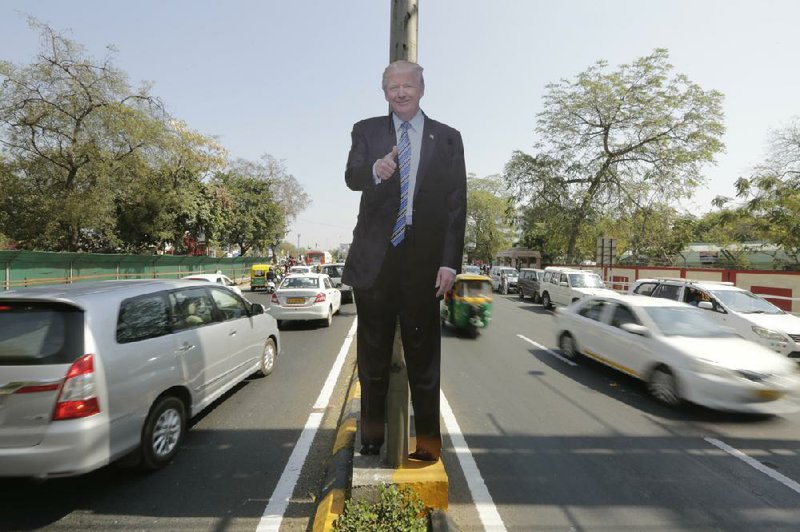WASHINGTON -- Talks between the United States and India intended to forge at least a modest trade pact in time for President Donald Trump's visit that begins Monday are in limbo.
"I'm really saving the big deal for later on," Trump said last week. "I don't know if it will be done before the election, but we'll have a very big deal with India." The U.S. presidential election is Nov. 3.
"You've got two leaders who are looking at trade very much as a zero-sum game," said Richard Rossow, a specialist in U.S.-India relations at the Center for Strategic and International Studies.
Long notorious for high trade barriers and a cumbersome bureaucracy, India had for the past two or three decades been slowly overhauling and opening its economy. Under Prime Minister Narendra Modi, that trend has reversed.
[Video not showing up above? Click here to watch » https://www.youtube.com/watch?v=lsJ2VBvAkTU]
Regarded as a business reformer when he took office in 2014, Modi has increasingly matched Trump's "America First" example with "India First" policies of his own.
"U.S. behavior on the trade front has pushed India in the opposite direction of where we could like it to go," Edward Alden, senior fellow at the Council on Foreign Relations, said Friday.
Trump withdrew from a 12-country Asia-Pacific free trade pact negotiated by President Barack Obama's administration. Similarly, Modi last year abandoned another Pacific Rim trade agreement, worried that India would be overwhelmed by Chinese imports.
The International Monetary Fund last month scaled back its expectation for India's growth this year to 5.8% from the 7% it had expected back in October. Indian loan companies, struggling to collect on bad debts, have reduced lending, thereby squeezing Indian consumers.
The Trump administration escalated the pressure on India last year by denying some of its products preferential duty-free entry to the American market. In effect, that move raised tariffs on Indian imports.
The administration is annoyed by a deficit in the trade of goods with India that last year reached $23.3 billion. The Office of the U.S. Trade Representative last year argued that India had failed to provide assurances that it would give U.S. products "equitable and reasonable access" to its markets.
The thinking was that India would make concessions to regain its duty-free benefits. But India hasn't yielded yet.
"We had hoped that India would respond with a little more urgency," said Roger Murry, senior policy adviser at the law firm Akin Gump Strauss Hauer & Feld.
Negotiations between U.S. trade negotiator Robert Lighthizer and India's commerce minister, Piyush Goyal, seemed to be advancing until about a week ago. Yet they failed to bridge their differences.
"I would have thought they would have been able to pull off a mini-deal," said Safiya Ghori-Ahmad, an India specialist at the consulting firm McLarty Associates. "It seems there are a lot of sticky issues."
Just as negotiators were trying to conclude an agreement, India this month made another lurch toward protectionism. It issued an annual budget that raises import taxes on everything from cheese to shoes to toy tricycles.
The two sides have squabbled over access to India's dairy market. A predominantly Hindu nation, India prohibits, on religious grounds, dairy imports that do not derive from cows that have been raised on vegetarian diets. The U.S. dairy industry argues that such restrictions are scientifically unnecessary and burdensome.
The administration has complained, too, about Indian restrictions on imported medical devices. In 2017, Indian officials imposed price controls on coronary stents and knee implants, forcing American companies to sell those products at a loss.
U.S. distilleries also have a big stake in a more open Indian economy. India is by far the world's largest market for whiskey. In 2018, Indian drinkers downed nearly 1.7 billion liters of whiskey, worth $25 billion, accounting for half the world's consumption and out-drinking Americans by a factor of three, according to Euromonitor. But facing 150% tariffs on imported spirits, U.S. distilleries sold just $7 million worth of whiskey to India in 2018, according to the Distilled Spirits Council of the United States.
A Section on 02/23/2020
